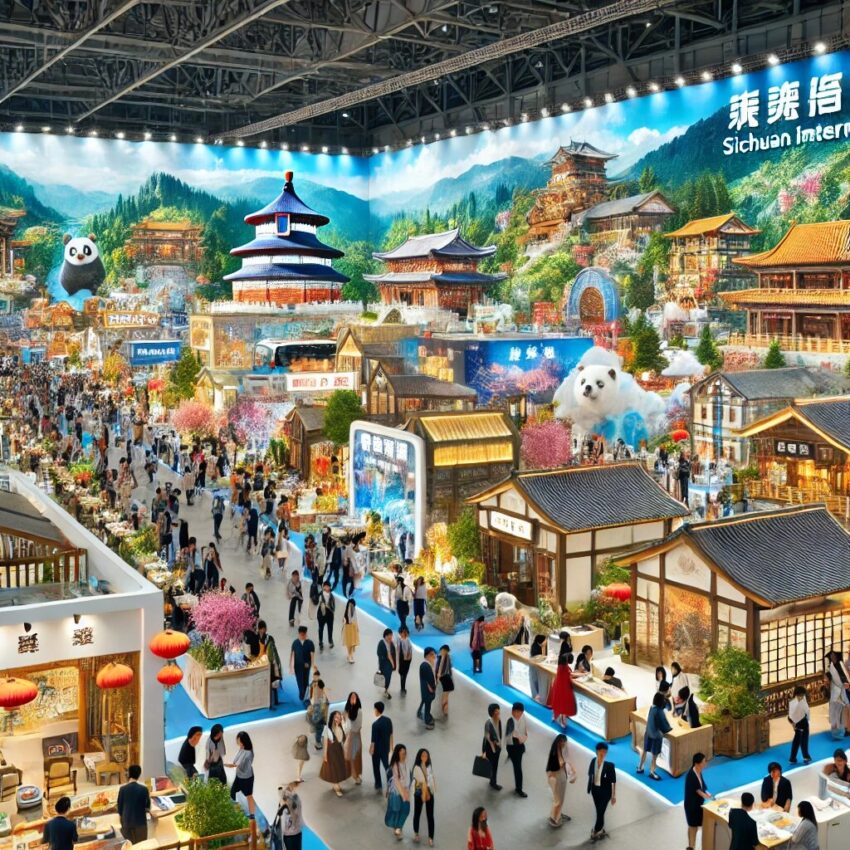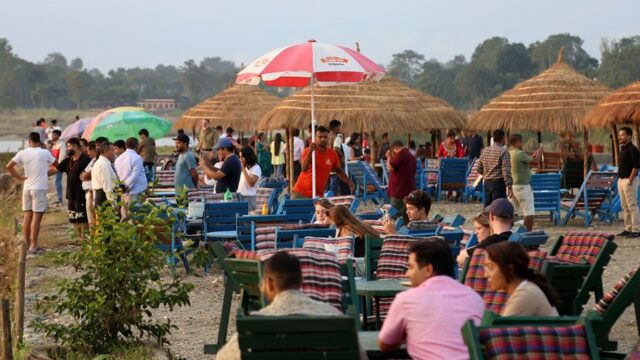In late April 2025, the 11th Sichuan International Travel Expo was held from April 25 to 27 in the culturally rich cities of Emeishan and Leshan, China. The event attracted both domestic and international stakeholders, signaling a significant moment for the travel and tourism industry. This year’s expo focused heavily on cultural tourism, with a unique emphasis on integrating modern technology with ancient traditions, making its impact felt far beyond China’s borders.
A key theme of the 2025 expo was the combination of “Cultural Tourism + Technology.” This intersection was showcased through a variety of innovative initiatives. Among the standout features was the introduction of low-altitude flight routes, which provided tourists with a fresh perspective of China’s iconic landmarks. One notable example was the “Leshan Giant Buddha-Emei Mountain” route, offering a 20-minute flight connecting two UNESCO World Heritage Sites. This new travel experience allowed visitors to explore the natural beauty and cultural history of the region in a whole new way.
The expo also presented several other technological innovations. A special low-altitude flight zone demonstrated sightseeing and rescue technologies, while the Leshan Pavilion introduced an immersive virtual experience using Extended Reality (XR). This allowed attendees to explore the foot of the Giant Buddha and the Golden Summit of Mount Emei, bringing the physical sites to life in an entirely new digital format. Adding to the technological showcase, the Forbidden City Museum made its debut at the expo, displaying cultural relics through mixed reality (MR) technology, blending traditional heritage with modern digital tools to appeal to tech-savvy tourists, especially younger travelers and families.
The event was not just about technological advancements but also about international collaboration. Attracting guests from over 30 countries and nearly 300 exhibitors, the expo served as a global platform for promoting China’s tourism potential. The signing of eight major cultural and tourism projects at the opening ceremony underscored the growing integration of China’s tourism industry with global markets. These projects, such as the “Mount Emei Light and Cultural Tourism Resort” and initiatives like the Ziyang Digital Tourism project, reflect broader trends in tourism that combine sustainability, innovation, and cultural preservation.
A unique aspect of the expo was its ability to bridge traditional tourism with cutting-edge technology. Visitors could engage with interactive experiences, such as AI-powered sugar painting, a traditional Chinese art form enhanced through artificial intelligence. Additionally, exoskeleton climbing equipment allowed attendees to simulate the experience of scaling Mount Emei, offering a glimpse into how tourism experiences will evolve by combining physical and virtual elements.
Sichuan, with its rich cultural heritage and landmarks like the Leshan Giant Buddha and Mount Emei, is positioning itself as a global tourism hub. The expo marked a pivotal step in this direction, with the region signing over 8.88 billion yuan in tourism projects. These developments, along with the integration of digital technologies, are expected to attract international tourists and further establish Sichuan as a key player in China’s tourism industry.
Looking ahead, the 11th Sichuan International Travel Expo highlighted the future of tourism, one where cultural exploration and technology come together to create immersive and sustainable travel experiences. As global travel trends shift toward digital and hybrid experiences, this expo set the stage for a new era in tourism one where travelers can experience destinations in innovative ways, reducing the environmental impact of traditional tourism while expanding global access to cultural heritage.
The expo’s influence extends beyond China. The blending of cultural and technological innovations at the event offers valuable insights for travel professionals worldwide. Digital tourism is poised to drive future growth, providing new opportunities for tour operators, travel agencies, and hospitality providers to cater to the tech-savvy generation of travelers. Moreover, the integration of virtual alternatives to some of the world’s most popular tourist destinations could alleviate overcrowding and provide sustainable solutions to the challenges facing global tourism.
In conclusion, the 11th Sichuan International Travel Expo marked a defining moment for global tourism. The event not only elevated Sichuan as a global destination but also showcased the future of travel an exciting fusion of culture and technology. The impact of this expo is expected to reshape the tourism industry, offering travelers a chance to explore heritage in once unimaginable ways, ushering in a new chapter for global tourism.






